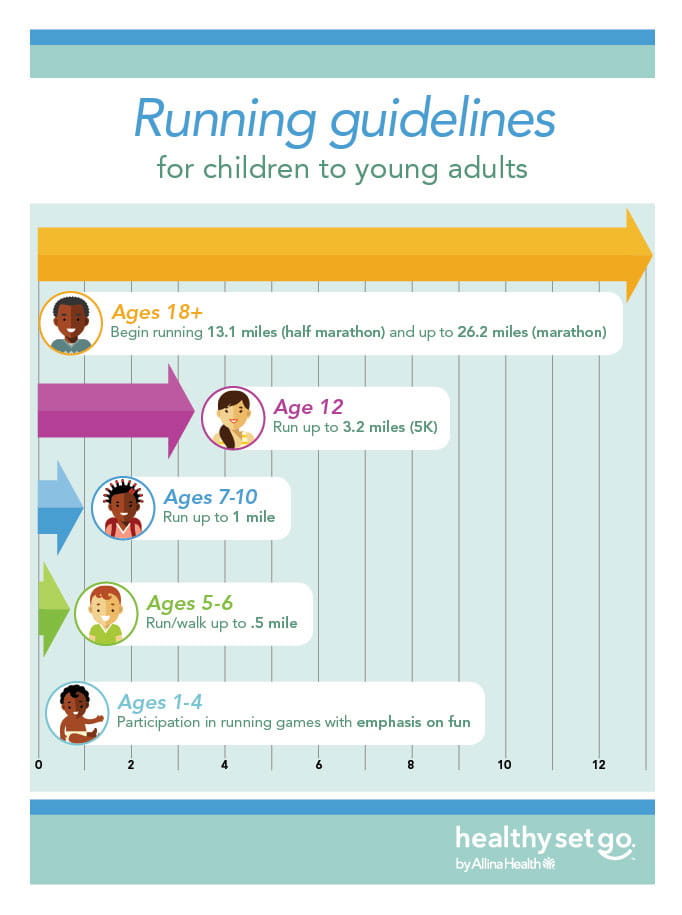I like to encourage parents to start building a culture of fitness with their family. Beginning early on, emphasize the fun of participating in activities and avoid putting pressure on competition. I also recommend that activity choices should be driven by the
child, not by a parent or coach. For a four-year-old, this might mean kicking a soccer ball in the backyard with the family, with a loose emphasis on the rules of soccer and no keeping score. The goal is to have fun, because the more fun had, the more likely the child will choose to continue the sport.
When moving from running as part of a sport, like soccer or football, to the sport itself, it can be difficult to determine how much running is too much for your child, especially when he or she is enthusiastic. A child is never too young to run, but the distance should be appropriate for his or her age and physical
development. I share these guidelines:

View the text from this infographic in an alternative format.
This chart shows running guidelines for children to young adults. It says that:
Ages 18+ can begin running 13.1 miles (half marathons) and up to 26.2 miles (marathons).
Ages 12-18 can run up to 3.2 miles.
Ages 7-10 can run up to 1 mile.
Ages 5-6 can run or walk up to half a mile.
Ages 1-4 can participate in running games with an emphasis on fun over competition.
Sticking to the guidelines in this chart are important because there are some common health issues for young runners.
Overuse injuries. Running is a high-impact sport that puts more than double your body weight on your leg bones and soft tissue with each foot strike. With shorter strides, kids pound the pavement more often, which increases the risk of overuse injuries like stress fractures and Achilles tendinitis.
Growth plate fracture. The growth plate is the area of tissue near the ends of the long bones. These plates determine the future length and shape of the bones once matured. Growth plates are the weakest area of growing bodies and are vulnerable to injury from trauma or overuse.
Body temperature. Children handle heat differently than adults because of the smaller surface area of their bodies. Kids will retain more heat on hot days and lose more heat on cold days. Make sure that your little athlete wears appropriate clothing, takes frequent breaks and stays hydrated before,
during and after activities.
Burnout. Burnout happens as a result of the expectations or demands (from themselves, parents or a coach) of a sport. It can lead to low self-esteem and, ultimately, withdrawing from an activity when it no longer feels enjoyable.
Encourage lifelong fitness by building a culture of fitness from a young age. Encourage your child to choose which sports they want to participate in and let them try out a variety of activities. Talking with your child about the things they enjoy and don't like about a particular activity can help narrow down future choices and find the right fit.







